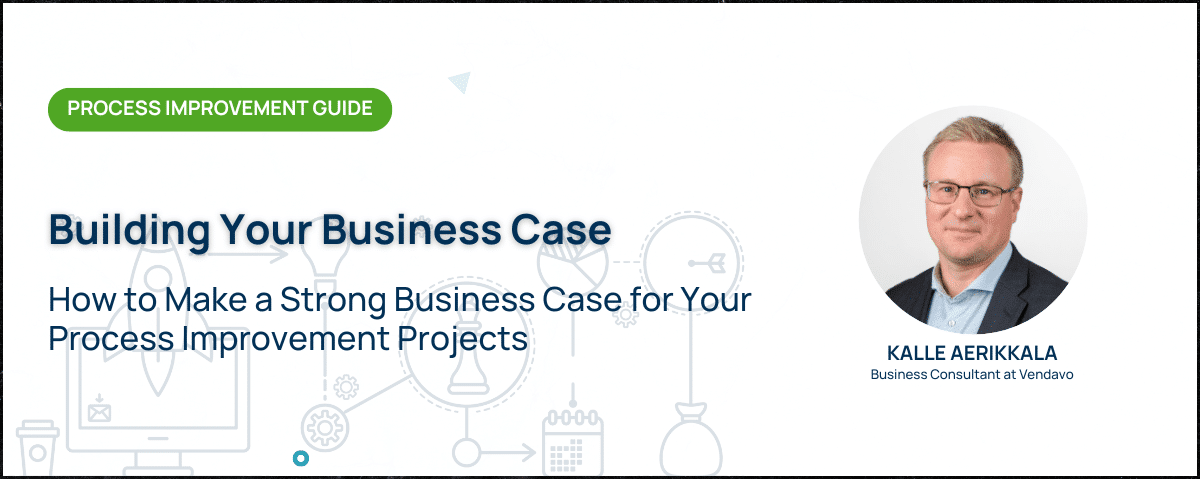
Building a business case that resonates and drives results is both an art and a science. From identifying the problem to proposing a solution, every step needs precision and clarity. Kalle Aerikkala, Business Consultant at Vendavo, explains how to build a compelling business case, the common issues organizations face, and how to overcome them for smooth process improvements – plus ongoing growth and profitability.
Creating a business case often feels like solving a complex puzzle. But it’s also one of the most important steps to ensure your process improvement projects succeed.
Whether you need to get buy-in from stakeholders or define a clear path to profitability, a well-crafted business case is key.
Here’s how to build a strong business case that stands out.
4 Steps to Identify the Problem
Developing a business case starts with identifying the core issue that needs addressing. This can be tricky because organizations often juggle multiple problems at once.
To tackle this step effectively:
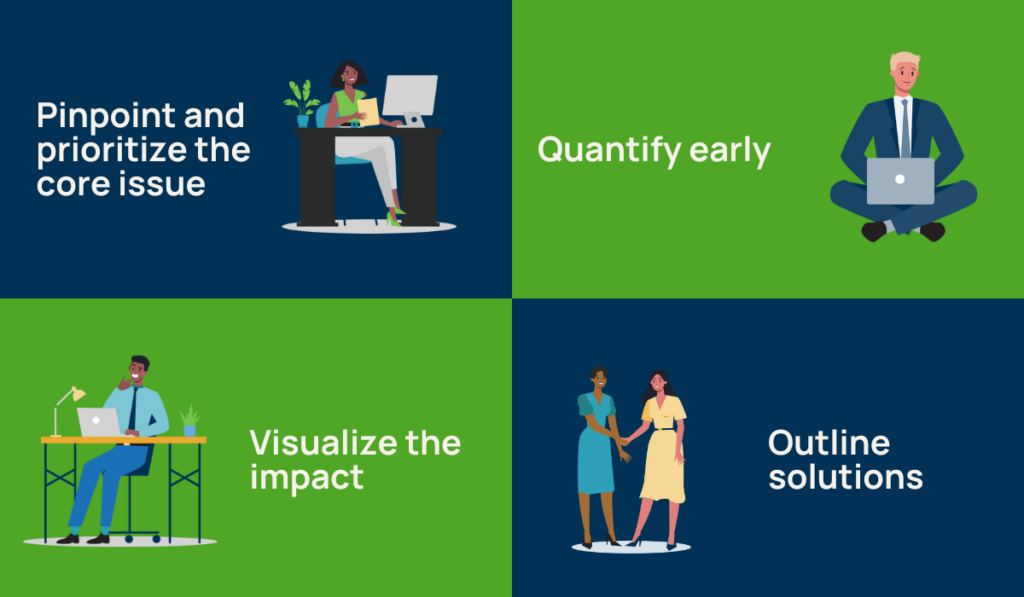
- Pinpoint and prioritize the core issue
Define the problem you want to solve. This requires sifting through multiple issues and determining which is the most critical.
- Quantify early
Apply data to the problem as early as possible. Numbers can highlight the severity and urgency of the issue, making it easier to address.
- Visualize the impact
Start thinking about potential improvements. What if you could enhance your pricing, sales, or rebate management strategies? Imagine the positive outcomes.
- Outline solutions
After you pinpoint the most valuable problems, outline the most effective solutions. This sets up a solid foundation for your business case.
By following these steps, you’ll be well on your way to crafting a compelling business case that drives results. But if you need more clarity, we wrote an entire eBook on getting your business case just right.
How to Choose and Prioritize Key Metrics
Choosing the right metrics is crucial for building a strong business case. Here’s how to make sure yours hit the mark:
- Reflect new ways of working – capture the essence of the changes you’re proposing and how they’ll make a difference
- Establish a baseline – this initial measurement will be your point of reference to track progress and measure improvements
- Choose measurable metrics – you need clear, consistent data you can track over time. If you can’t measure it, you can’t manage it.
- Relevance to improvement goals – show how the changes you’re making are driving the improvements you want to see
- Different levels of measurement – how changes affect profitability per customer, profitability improvements for specific products, overall profitability
Selecting the right metrics ensures that your business case is grounded in solid, measurable data. This makes it easier to demonstrate the effectiveness of your proposed changes and to secure buy-in from stakeholders.
Data to Drive Your Business Case
Gathering and analyzing data is the backbone of any strong business case and makes sure you have the right metrics to support your story:
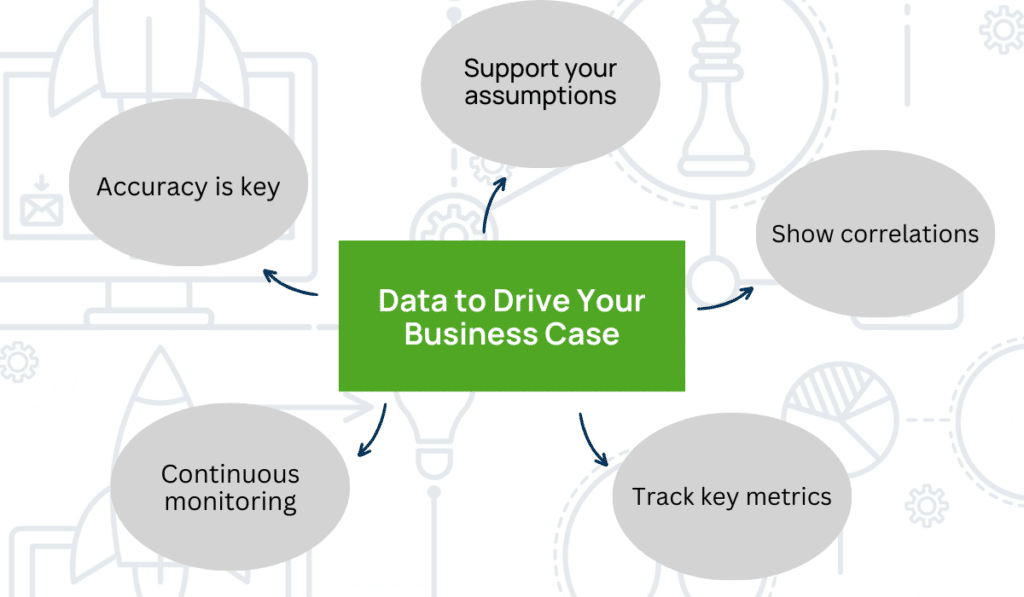
- Accuracy is key
Your business case relies on this data to back up your assumptions and projections. Make sure your data sources are reliable and up to date.
- Support your assumptions
This adds credibility and makes your case more convincing. If you assume faster quote generation will lead to more sales, for example, have the data to back it up.
- Show correlations
It might be tough to prove direct causality between initiatives and outcomes, but you can show strong correlations. Find patterns that suggest your efforts are paying off.
- Track key metrics
Focus on metrics that can highlight correlations. Track how many quotes turn into actual sales, for example, or how long it takes to generate quotes.
- Continuous monitoring
Monitoring helps you catch issues early and adjust strategies as needed. It also shows ongoing progress, which can be very persuasive to stakeholders.
The right data helps you create a solid foundation for your business case. This makes it easier to demonstrate your proposed initiatives’ value and get buy-in from stakeholders.
Essential Components of a Business Case
Creating a solid business case involves more than just crunching numbers. Here’s what else you need to include:
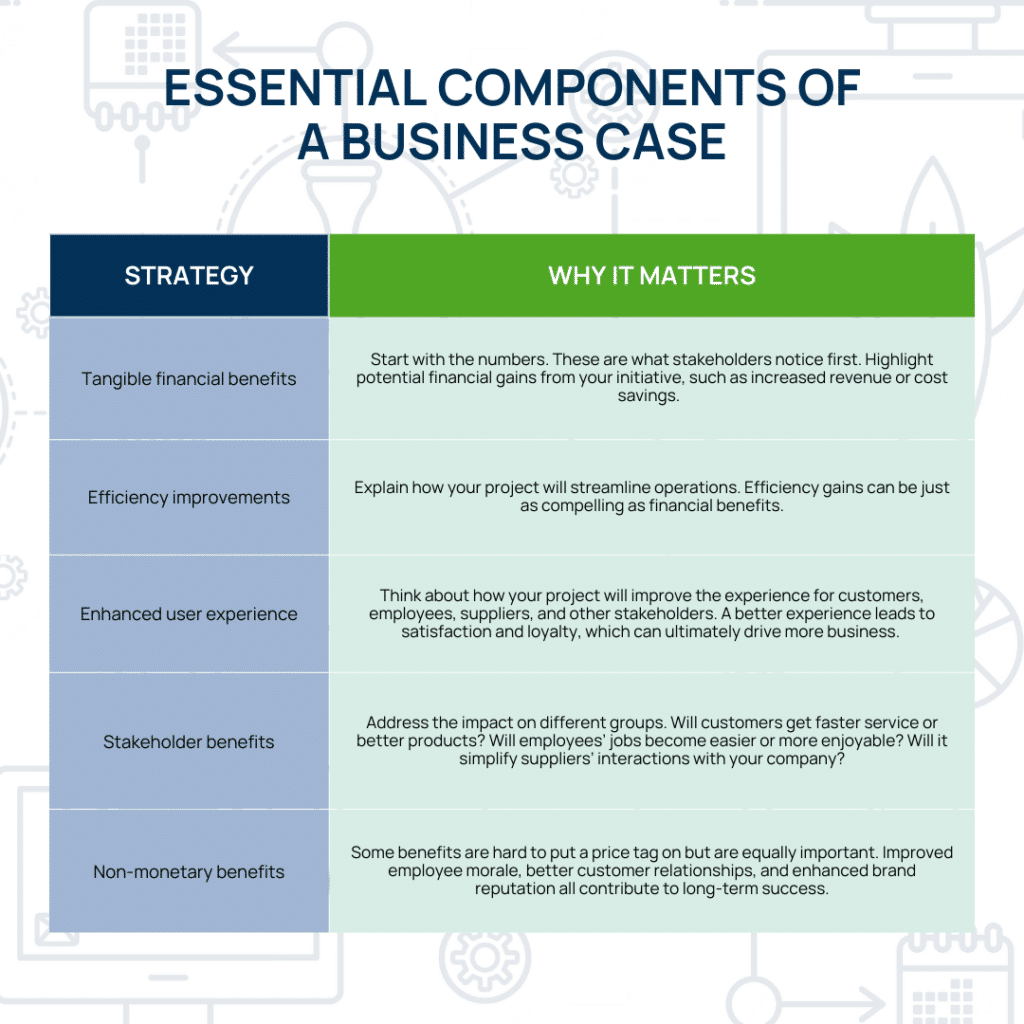
- Tangible financial benefits
Start with the numbers. These are what stakeholders notice first. Highlight potential financial gains from your initiative, such as increased revenue or cost savings. - Efficiency improvements
Explain how your project will streamline operations. Efficiency gains can be just as compelling as financial benefits.
- Enhanced user experience
Think about how your project will improve the experience for customers, employees, suppliers, and other stakeholders. A better experience leads to satisfaction and loyalty, which can ultimately drive more business.
- Stakeholder benefits
Address the impact on different groups. Will customers get faster service or better products? Will employees’ jobs become easier or more enjoyable? Will it simplify suppliers’ interactions with your company?
- Non-monetary benefits
Some benefits are hard to put a price tag on but are equally important. Improved employee morale, better customer relationships, and enhanced brand reputation all contribute to long-term success.
A well-rounded business case shows stakeholders you’ve thought through every aspect of the project, from immediate financial impacts to broader, long-term benefits. This gives you a stronger argument for why your initiative deserves support.
8 Tips for How to Communicate Value Proposition and ROI
Effectively communicating your business case is key to getting everyone on board. Here’s how to make your message clear and compelling:
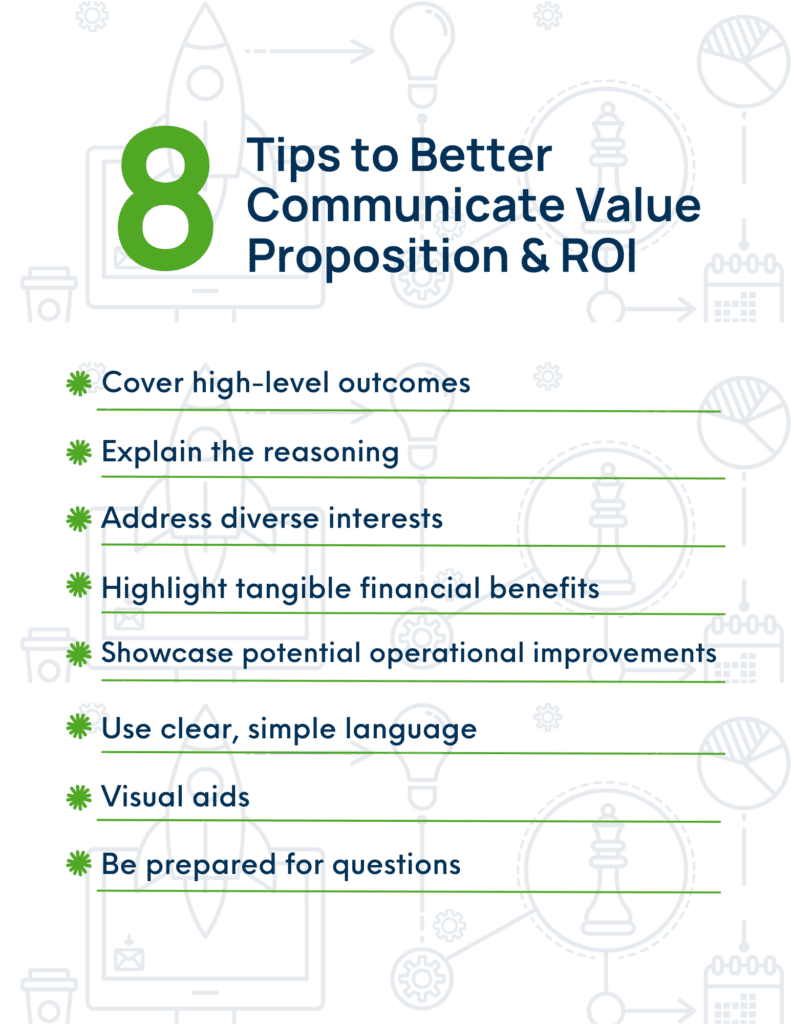
- Cover high-level outcomes – Present the big picture. What are the major benefits of your initiative? Think increased revenue, cost savings, or market expansion.
- Explain the reasoning – Outline the steps you’ll take and why. This helps everyone understand the logic behind your proposal and that it’s well thought out.
- Address diverse interests – Different stakeholders care about different things. Make sure your business case touches on all these points.
- Highlight tangible financial benefits – Show clear numbers like projected revenue increases or cost reductions to demonstrate direct impacts.
- Show potential operational improvements – Explain how your project will make operations more efficient. These can be just as important as financial gains.
- Use clear, simple language – Avoid jargon and technical terms that might confuse your audience. Use clear, straightforward language to explain your points.
- Visual aids – Utilize charts, graphs, and other visuals to illustrate your points. Visual aids can make complex information easier to understand and more engaging.
- Be prepared for questions – Stakeholders will likely have concerns or need clarification. Anticipate potential questions and be ready with answers.
By effectively communicating value proposition and ROI, you make a compelling case that resonates with all stakeholders. This comprehensive approach ensures everyone understands the full value of your proposal, making it more likely to get the green light.
How Vendavo Can Help
Creating a compelling business case is both an art and a science. It’s about identifying core issues, choosing metrics, gathering data, and clearly communicating value and ROI.
By focusing on both the financial benefits and operational improvements, you can build a persuasive case that resonates with all stakeholders.
And with the expertise of Vendavo’s business consultants, you’ll have the support needed to make your business case both well-rounded and set up for success. Reach out today to speak with an expert about improving your business needs.